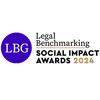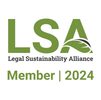An open-ended parameter range in a main claim may seem sensible to maximise the commercial value of a patent, but does this risk undermining the chances of securing grant and also patent validity in Europe?
Further to this article from Paul Andrews, here, I consider the recent European Patent Office Boards of Appeal decision T 1977/22 and offer some practice guidance on drafting patent claims in chemical sectors using open-ended parameter ranges.
Summary
Patent claims with parameter ranges are used frequently in a variety of chemical sectors, including cosmetics, metal alloys, composite materials, chemical processing/general chemical production, polymer materials, etc. A parameter range within an independent claim can be useful to establish novelty and/or inventive step: a material exhibiting a desired moisture absorbency, production of certain gas volumes from a chemical reaction, a particle with a desired surface area, a metal alloy with a desired hardness or toughness. Often, at the time of preparing and filing a patent application, R&D is not always a hundred percent complete, and there are often unanswered technical questions and unconfirmed performance limitations, e.g. absorbency, harness toughness etc. It is, therefore, part of the patent attorney toolbox to use open-ended parameter ranges to help ‘fill the gaps’ in these situations and avoid unnecessarily limiting patent protection.
Background
According to Article 83 EPC (sufficiency), European patents should ‘disclose the invention in a manner sufficiently clear and complete for it to be carried out by a person skilled in the art.’ For numerical ranges, this requirement is typically interpreted as meaning that the skilled person must be able to reproduce the invention across the entire claimed range.
An open-ended range defines only one boundary and extends infinitely in one direction. The question for patentees and the EPO is do such ranges satisfy the requirement of reproducibility across the entire (infinite) scope?
T 1977/22 related to Rhodia Operations' patent EP 3086872, which was opposed by Neo Chemicals & Oxides (Europe) Ltd. The patent relates to a thermally stable inorganic composite oxide material comprising specific amounts of metal oxides. The invention proposed to solve the problem of thermal ageing in catalytic converters, where traditional materials lose their specific surface area and catalytic efficiency when exposed to high operating temperatures. By creating a composite oxide that maintained a high surface area even, the patentee aimed to provide improved catalysts with superior durability.
Claim 1, as granted (and on appeal), specified an inorganic composite oxide material comprising specific amounts of particular metal oxides. Importantly, claim 1 recited the material exhibited a surface area defined by one of three open-ranges:
- >150 m²/g after calcining at 900°C for 2 hours;
- >85 m²/g after calcining at 1000°C for 4 hours; or
- >40 m²/g after calcining at 1100°C for 5 hours.
The Opposition Division revoked the patent for insufficiency as there was no upper limit to the indicated surface area and in support of the Opponent that argued claim 1 was insufficient because it was impossible to reproduce the invention across the entire scope of these open-ended ranges. The Patentee argued in response that the patent provided detailed teachings in the examples that would enable a skilled person to manufacture the claimed material through routine trial and error.
The Board of Appeal proposed that, in order to satisfy the sufficiency requirement for open ranges, the patent should provide ‘teachings demonstrating that, by operating within the scope of specific (essential) structural and/or process features, the skilled person would be in a position to achieve multiple variants of the invention without undue effort i.e. embodiments with different parametric values falling within the open-ended range.’
Applying the Board of Appeal general principle, we now have two helpful situations as guidance.
- situations where the defined parameter (absorbency, toughness, particle surface area) is not restricted by structural and/or process features.
Such claims may not be enabled unless the range is directly or indirectly limited by closing the range or by defining interrelated parameters imposing an upper boundary
- situations in which an open-ended range is further restricted by structural and/or process features.
These claims may be sufficiently disclosed if the teachings indicate that the skilled person could achieve different parametric values within the claimed range by making trivial adjustments within the scope of these features.
The following example cases may help crystallise how this works in practice.
A) An open-ended range that is restricted by structural and/or process features
Process features
T 2213/08 - absorbent powders with an absorbency range - Claim 1
Water-absorbent agent powders containing a carboxyl group and having surface regions crosslinked by a crosslinking agent having an epoxy group, characterised by comprising:
- 100 parts by weight of dried water-absorbent resin powders having a carboxyl group; and
- 1 to 30 parts by weight of liquid nucleophilic reagent other than organic acids, inorganic acids, and polyasparagine, wherein:
- absorbency under high pressure based on a physiologic saline solution under load of 50 g/cm2 is not less than 20 g/g; and
- a residual amount of the crosslinking agent having an epoxy group is not more than 2 ppm.
The open-ended range was reproducible over the whole scope, as it embraces values as high as achievable within the defined process features.
T487/89 – a fibre with ranges of tenacity, coefficient of stability, and toughness - Claim 1
- Polyhexamethylene adipamide fiber having a tenacity of at least 883 xnN/tex (10 g/d) and a formic acid relative viscosity of at least 50, characterized by:
- formic acid relative viscosity of 70 to 150,
- a coefficient of stability of tie molecule of at most 0.20,
- a shrinkage percentage of at most 4% with no load at 160°C in dry heat for 30 minutes; and
- a toughness of at least 17.66 N/tex (200 g/d)%, and produced by a direct spinning, drawing and heat-setting process, characterized in that:
- polyhexamethylene adipamide obtained by melt polymerization and having a formic acid relative viscosity of at most 70 is used as starting material;
- the starting material according to (i) is subjected to a solid-phase polymerization at a temperature of 180 to 240C up to a formic acid relative viscosity of 75 to 150;
- the polymer obtained according to (ii) is subjected to melt spinning to form spun fibers, cooling the spun fibers, adding an oiling agent to the cooled filaments, immediately taking up the oiled filaments with rollers in multi-steps which are rotating at successively increased circumferential velocities to conduct multistep drawing and heat-setting, where the drawing is conducted in at least two steps among rollers and where the ratio (DR) of the speed of said fiber leaving the drawing step having the highest circumferential velocity to the speed of said fiber entering to the drawing step satisfies the following condition: 5.2 ≤ DR ≤ 6.5, and where the surface temperature of the rollers which rotates at the highest circumferential velocity or of at least one among those in a subsequent position is of 220 to 250C (except the first one of said rollers); and
- the fiber stretched according to (iii) is wound in such a manner as to satisfy the following condition: 0.92 ≥ TS/GS ≥ 0.86 where TS = winding speed and GS = circumferential velocity of rollers having the highest circumferential velocity.
Similarly, the open-ended range was reproducible over the whole scope, due to the defined process features.
Structural features
T 1977/22 – the above new decision - Claim 1
- An inorganic composite oxide material, comprising:
- from 25 to 90 pbw Al2O3;
- from 5 to 35 pbw CeO2;
- from 5 to 35 pbw MgO, or
- from 2 to 20 pbw Pr6O11, or
- from 5 to 35 pbw MgO, and from 2 to 20 pbw Pr6O11; and
optionally up to 10 pbw of a combined amount of oxides of one or more dopants selected from transition metals, rare earths, and mixtures thereof,
and exhibiting a BET specific surface area:• of greater than 150 m 2/g after calcining at 900°C for 2 hours; or
• of greater than 85 m 2/g after calcining at 1000°C for 4 hours; or
• of greater than 40 m 2/g after calcining at 1100°C for 5 hours.
The specification provided detailed disclosure of how to manufacture the claimed material. The examples in the patent related to two distinct composite oxides - its components and concentrations falling within the scope of claim 1, including the specified open-ended ranges. The evidence provided in the patent indicated that the components and concentrations of the metal oxides were the essential parameters for adjusting and enhancing the specific surface area. The claims defined the essential structural features (the metal oxide components and their amounts) required to achieve the surface area parameters, and the invention was reproducible over its entire scope.
B) An open-ended range not restricted by any structural and/or process features
T 1008/02 - an absorbent composite with an absorbance range - Claim 1
1. An absorbent composite (16) comprising:
a porous fiber matrix (18) and an amount of superabsorbent material (20) present in said porous fiber matrix in the form of discrete particles dispersed among the interfiber pores (22) characterised in that:
said superabsorbent material (20) can absorb at least 27 milliliters of an aqueous solution of sodium chloride containing 0.9 weight percent sodium chloride per gram of superabsorbent material while under a restraining pressure of 21,000 dynes per square centimetre when determined by the Absorbency Under Load (AUL) test method as described in the description,
and that at least about 80% by weight of said dispersed discrete particles of superabsorbent material has a size in the unswollen condition which is greater than the median pore size of said porous fiber matrix (18) when wet.
The sufficiency requirements of Article 83 EPC were not satisfied as the specification did not provide any indication (i.e., structural or process features) of how the claimed discrete particle superabsorbent material could achieve an absorbency under load ( AUL) of at least 27 ml/g.
T 1942/21 - syngas with a gas production volume range
Claim 1
1. A process for burning lime or cement in which synthesis gas is produced and, where appropriate, used together with fossil fuels to burn the lime or cement, characterised in that
the methane content in the syngas is more than 12% by volume, preferably more than 14% by volume,
and that the methane-to-carbon monoxide ratio by volume is at least 6:10, preferably at least 8:10.
The claim and the description did not define any structural or process features needed to achieve high methane volumes and claim 1 does not fulfil the sufficiency requirements.
Guidance for using open-ended ranges or parameter ranges
So, it seems that for an invention that can be said to be restricted by structural or process features, an open-ended parameter range may still be a good strategy. On the other hand, if the main claim or the examples cannot provide any technical limitation for the parameter range in question then it may be wise avoiding these. Some take home drafting tips therefore may include:
1. If an opened-ended range is to be included, also include support for later limitation/capping of the undefined end
2. Ensure the appropriate technical questions are asked of the inventors – within the patent specification can we associate the open-ended parameter range to structural and/or process features?
3. If an open-ended range is to be included in claim 1 (due to unconfirmed technical data available at the time of drafting), then include alternative statements of invention that include the range capped at both ends
For expert advice on chemical-rated patent claims within the chemical sector, including metal alloys, cosmetics, composite materials, chemical processing and manufacture, please get in touch with Martin Neilson at Murgitroyd.



















